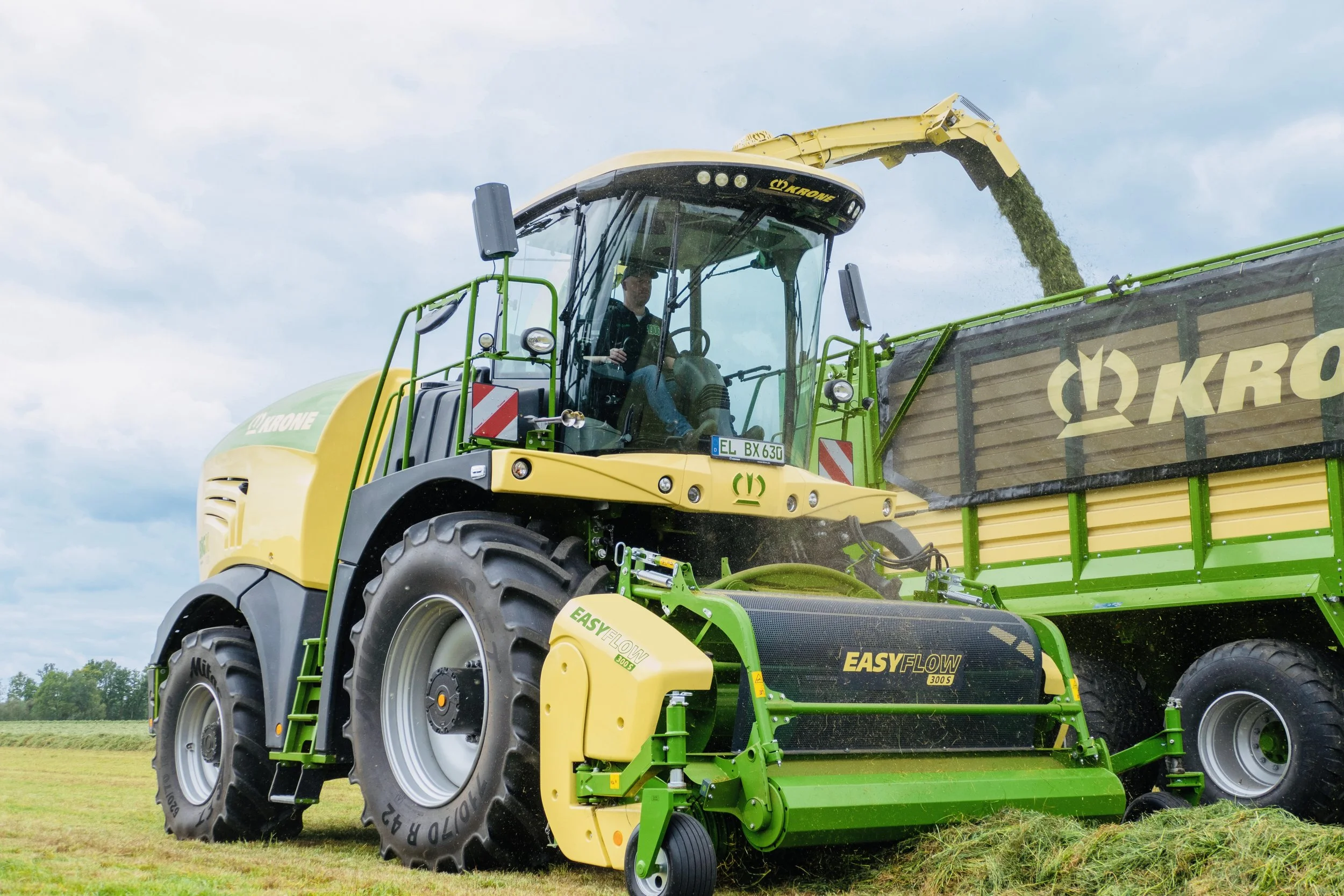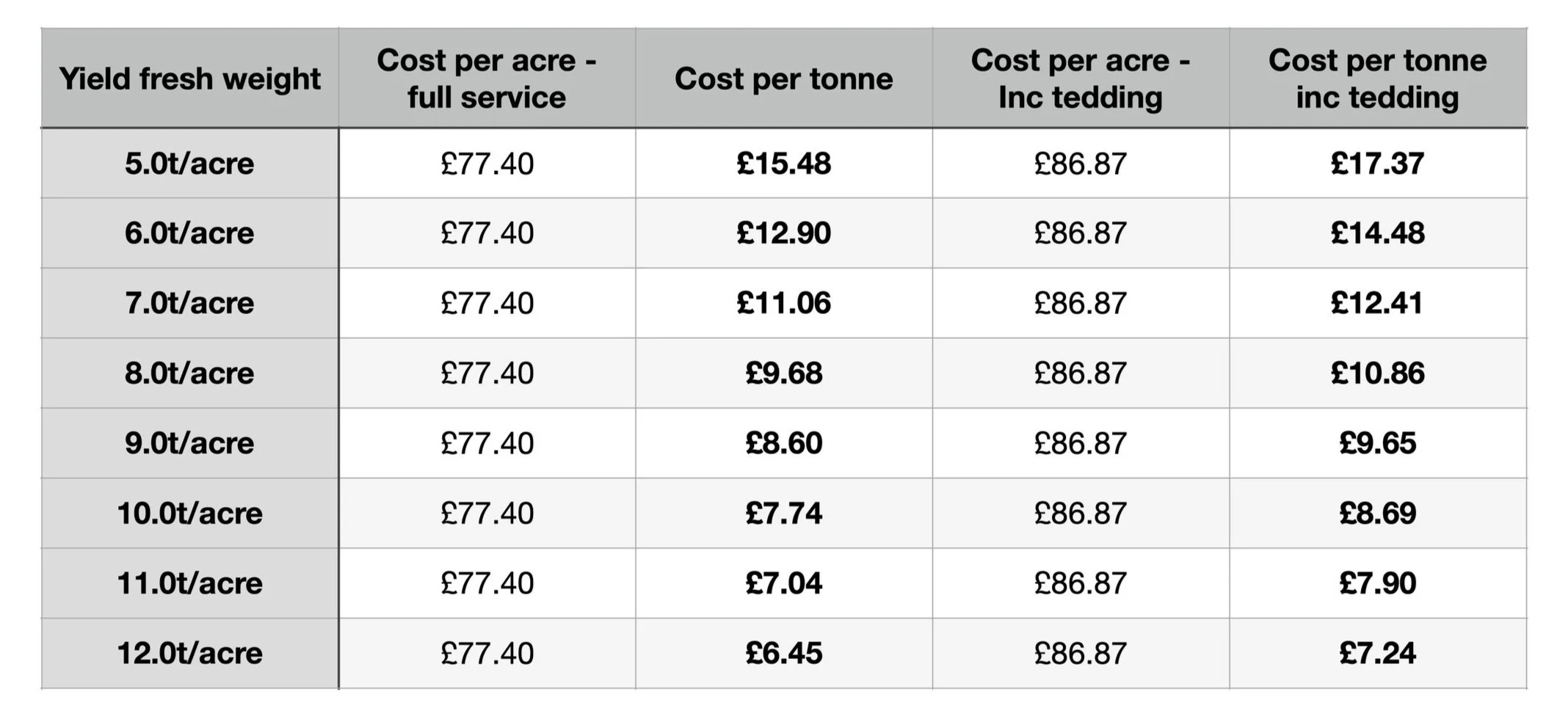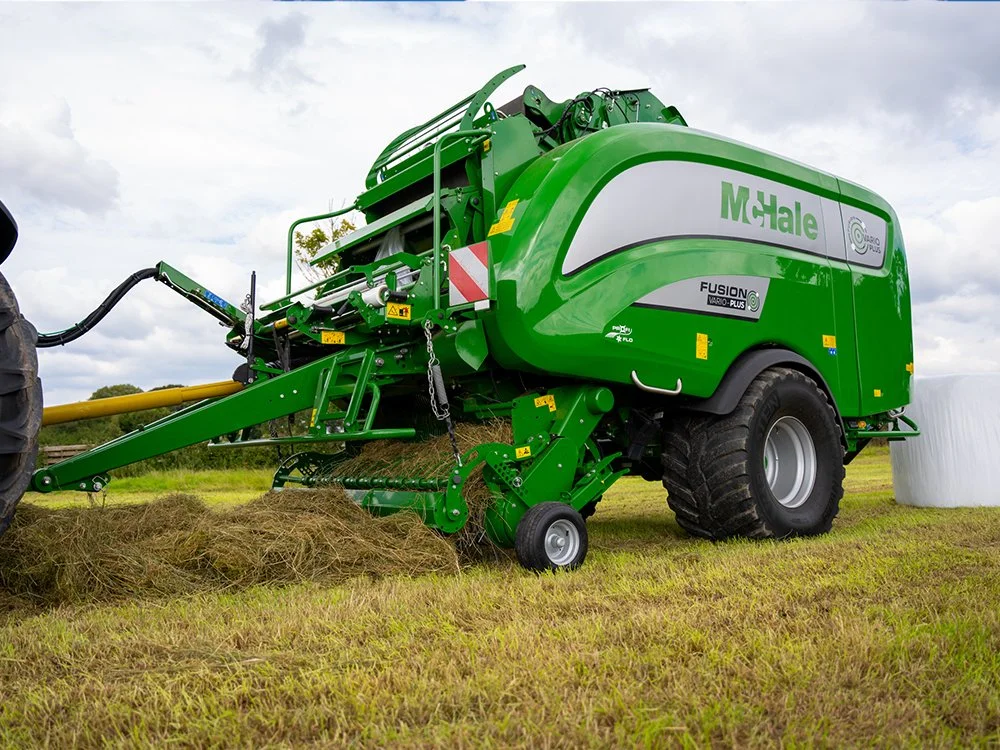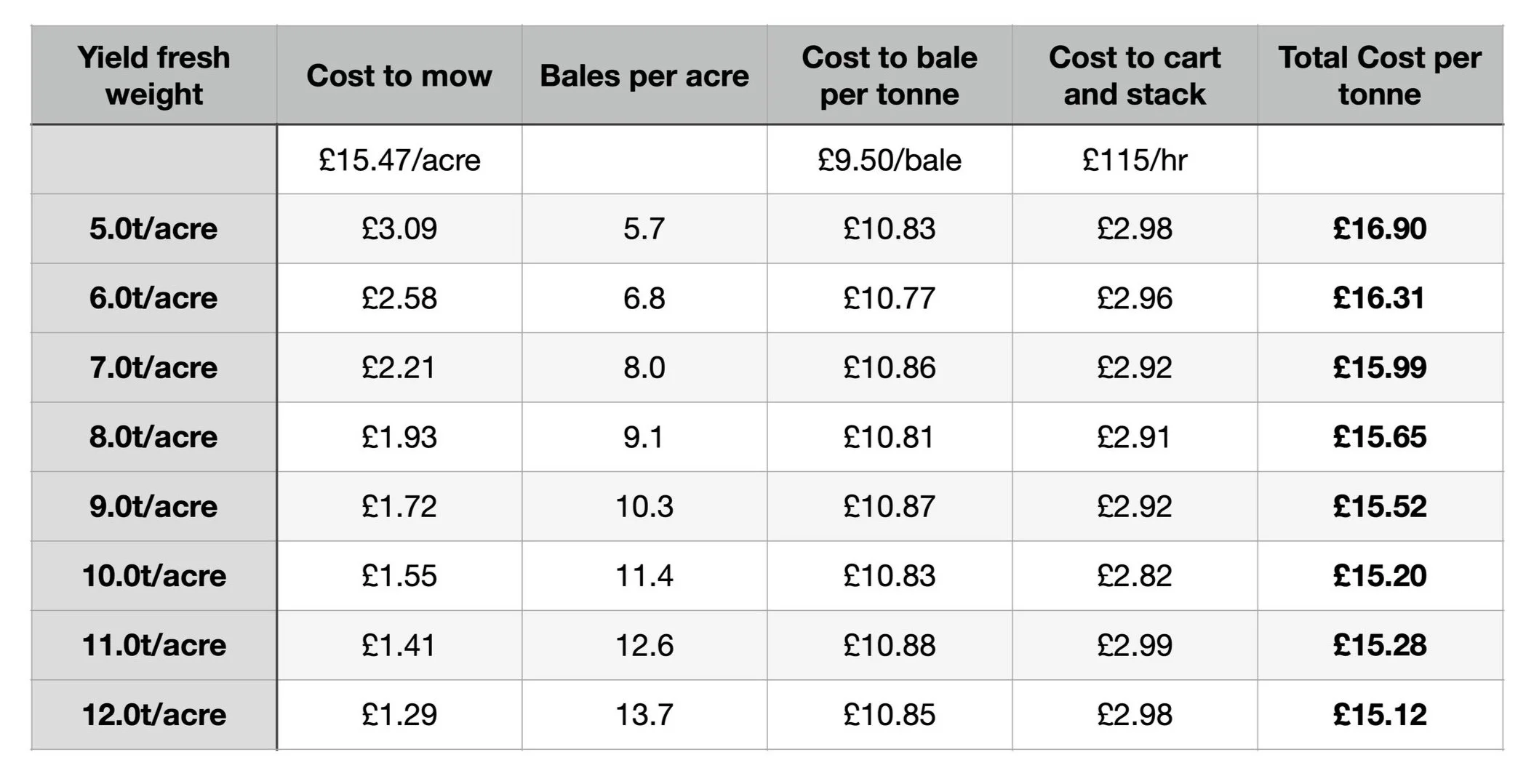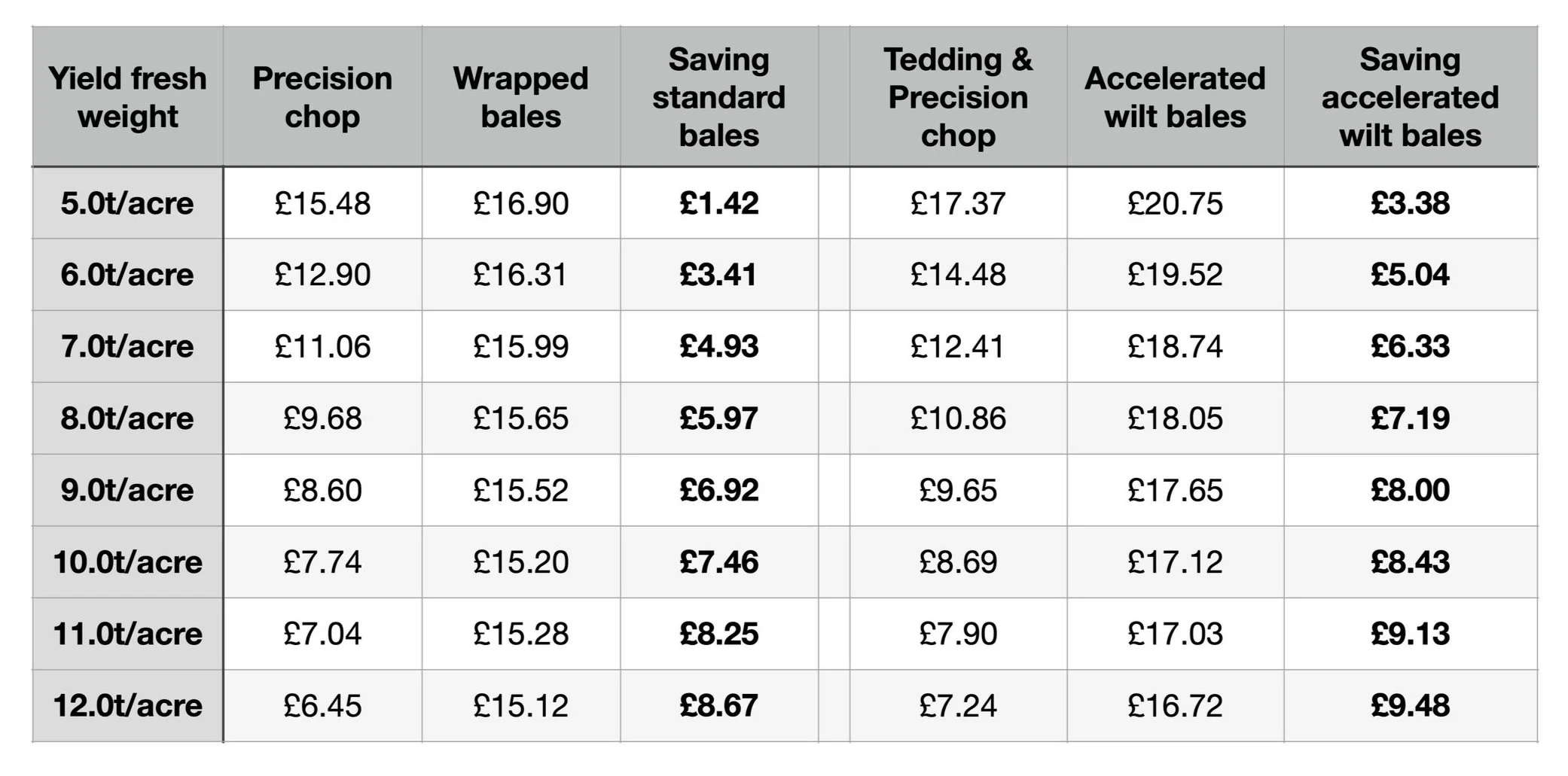Cost of bale silage vs clamp silage
How does anybody ever afford any of this stuff….? I mean obviously someone is buying it but tractors are £250,000 and a forage harvester is closer to £750,000 for heaven’s sake. And it’s not just the shiny metal that demands a kings ransom, adding up the costs for a new building project is just as scary.
How long does it take to pay for a silage clamp?
Once you start to get your head around the shear scale of the numbers, then you need to start to calculate the payback period if you are going to consider spending anything. Spending a fortune on a new silage clamp has got to have a payback; it has got to make financial sense and the reduction in harvest costs might be one of the most important areas to study. That means it’s vital to calculate the costs of making silage in bales against the cost of making silage in a clamp. There will be savings and efficiencies in the value of the forage you feed out of a clamp compared to bales, but the harvesting cost is the focus here.
Contractors scale precision chop machine - Krone Big
To try and make a comparison that is fair, the figures below are based on the contractor’s rates for the jobs required. Now you might argue that doing the work yourself would be considerably cheaper but I would suggest that the figures will always be comparable, whether you do it yourself or use a contractor. And those who believe that a tractor only costs the fuel it’s burning once it’s bought and paid for are not living in the same world as the rest of us. Use some real figures that include the repairs and depreciation costs and then the figures start to be a bit more believable.
How much does it cost to harvest silage?
Before we get too carried away with how much an acre it cost for this and that, we really need to decide what we are going to measure against. I suggest that as we don’t feed cows in acres, but in kilograms or tonnes of silage, or maybe even in mega joules of energy or grams of protein but that is probably going a bit too far, we should stick to tonnes at this stage.
The tonnes you are harvesting is not just a good measure to compare costs, but it also has a huge influence on the cost of the forage overall. This is because lots of the operations that a contractor carries out are charged per acre rather than per tonne or per hour, so the more tonnes they can harvest per acre, the lower the per tonne cost of the forage. The table below shows the costs per tonne for chopped silage and how the yield can effect the cost of your silage.
The cost of £77.40 per acre (or £191.25 per hectare) are based on the National Association of Agricultural Contractors charge guide for 2024 and is based on a full grass silage operation including mowing, raking, precision chopping and carting (3 trailers) and clamping. This includes the fuel costs based on £0.85 per litre for diesel. Obviously tedding would be charged extra at around £9.00-£9.50 per acre
How much does bale silage cost per tonne?
In order to compare these costs with bale silage we need to start to break down some of the operation costs. Whatever harvesting system you choose, the grass is going to have to be mown before you do anything else to it. If it’s going into a square baler it definitely needs to be raked into bigger swaths and if it’s going into a round baler then it might be left as mown?
To make this a bit more simple I have assumed just two different systems, firstly a simple mow, wilt and round bale. Secondly I have considered an accelerated wilt that introduces tedding and then raking operations before the baler.
McHale Fusion baler and wrapper combination
The table below gives a harvest and stacking cost assuming a McHale Fusion (or similar) baler producing chopped silage bales at around 850-900kg each. The cost to cart and stack the wrapped bales is based on a 120hp tractor and trailer (£60/hr) and a telehandler (£55/hr) but the output per hour is extremely variable. For the sake of this exercise I have made the following assumptions. Loading at a rate of 2.5 bales per minute (10 bales in 4 mins) in a light crop rising to 3 bales per minute in higher yields, and unloading / stacking at 3 bales per minute. Transport time of around 5 minutes each way.
Cost per tonne to cut, wrap and stack silage bales
Taking these costs and adding the accelerated wilting costs of tedding and rowing up ahead of the baler and we get some significantly higher costs
Cost per tonne for accelerated wilting silage bales
Combining all this together we get the following cost differences:
Now if you are still awake (or bothered) after all these tables, there are a couple of columns here that contain the important information. If you were the “average dairy farmer” feeding around 200 cows, so producing around 2,000 tonnes of silage, then these savings might be worth £3,000 to £18,000 per year.
In reality the saving is probably something more like £15,000 per year and that doesn’t go very far when it comes to building a new silage clamp. But then again the clamp should have a design life of at least 20 years and that would then be around £300,000 of total savings over that period.
So although this article doesn’t answer the question of “how on earth do you afford a new silage clamp?”, it does (hopefully) give you some tools to help try and navigate this calculation. What it doesn’t do is factor in the increased feed value from clamp silage and the reduced losses, and the reduced labour requirement during feed out. But those are topics for another day.
If you want to discuss how to calculate the value of a silage clamp for your silage or would like to discuss any other aspects covered in this series, contact me at jeremy@silageconsultant.co.uk
